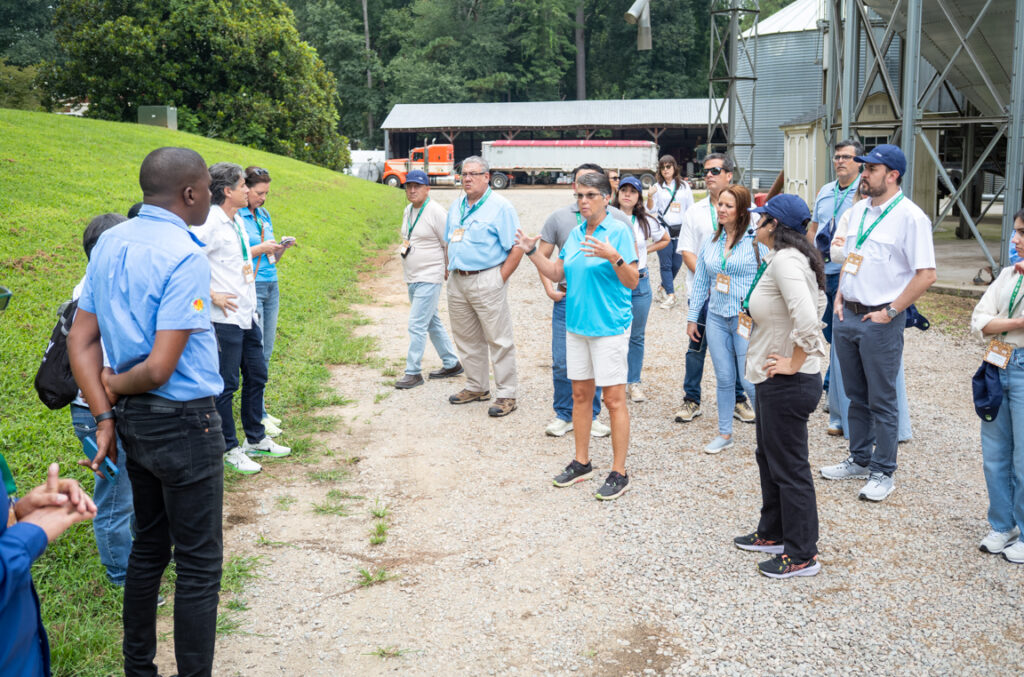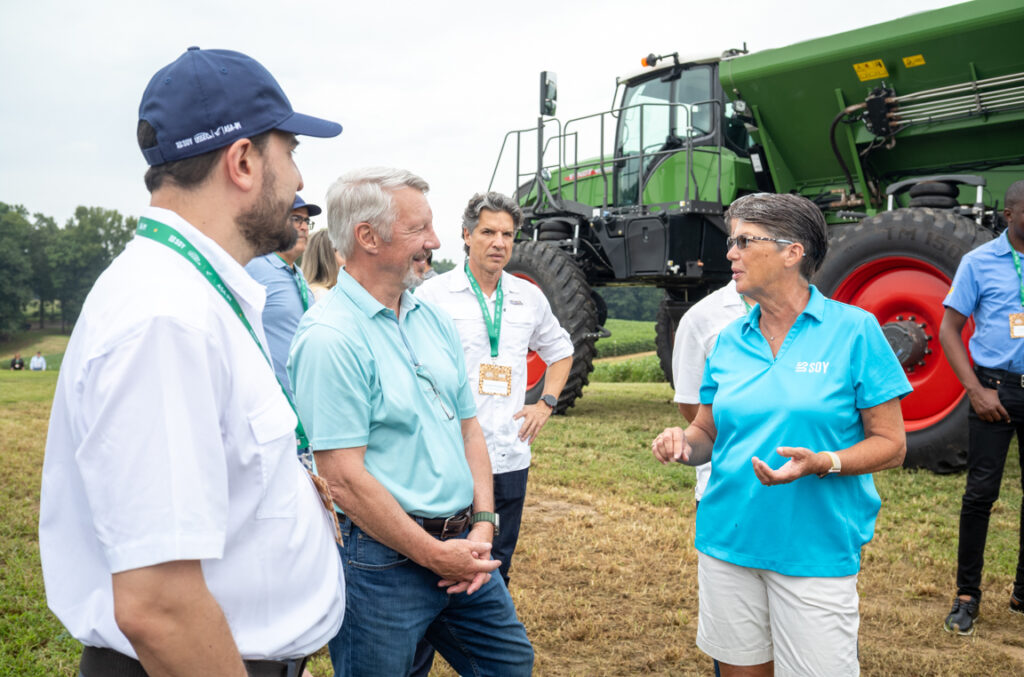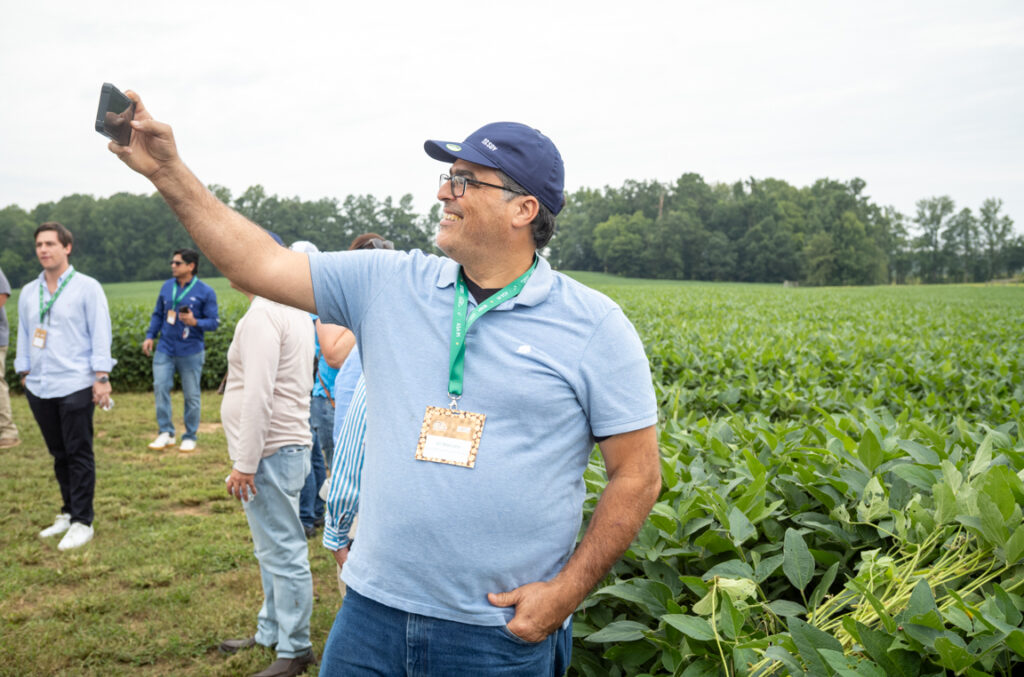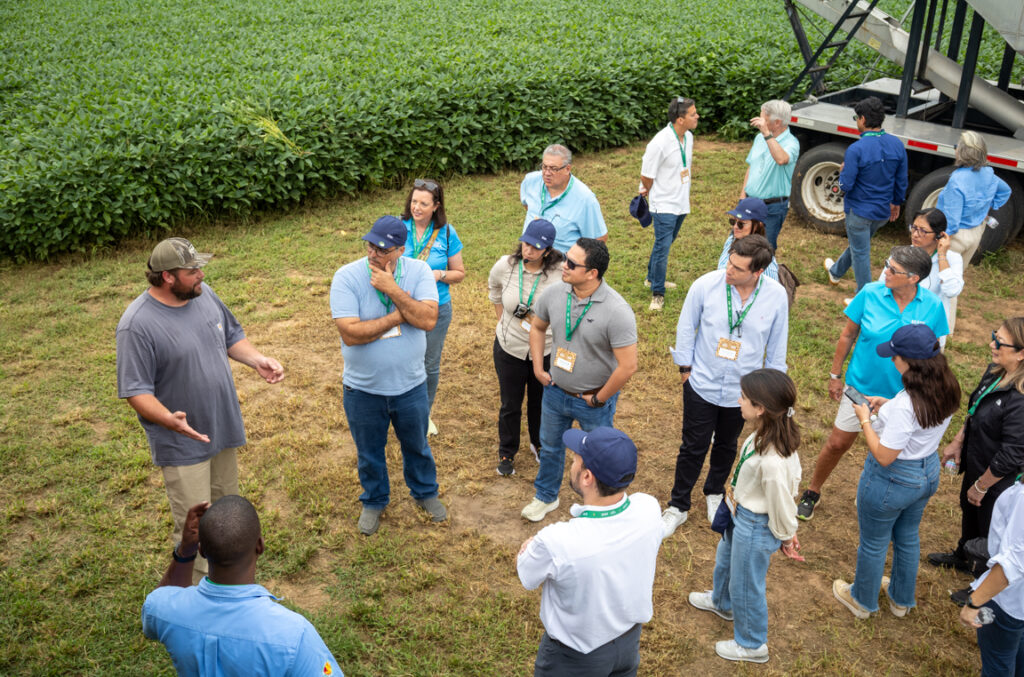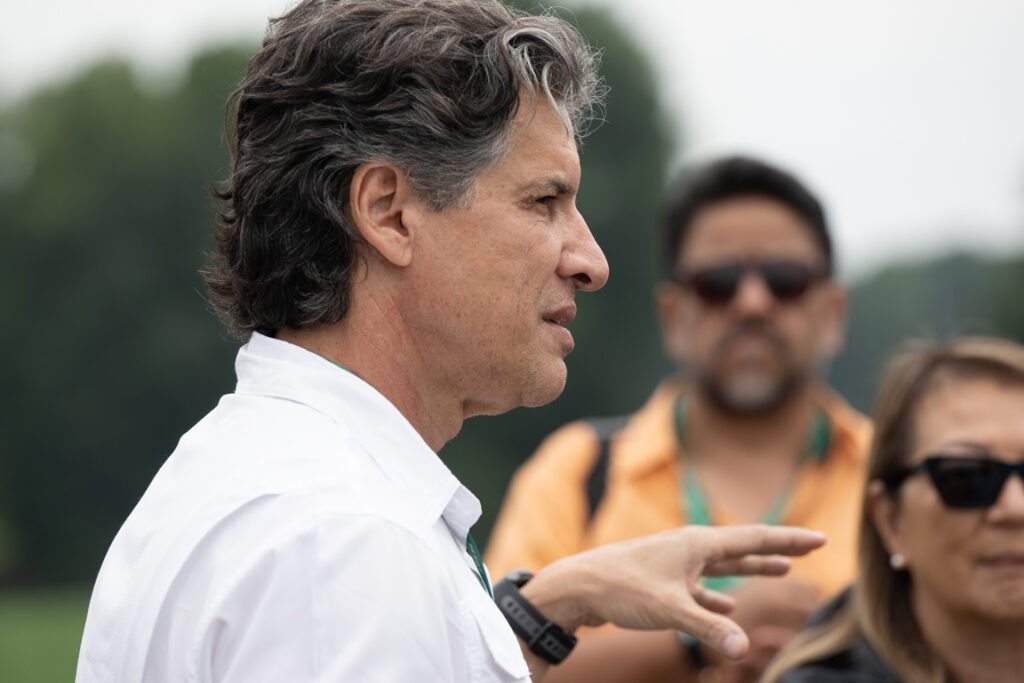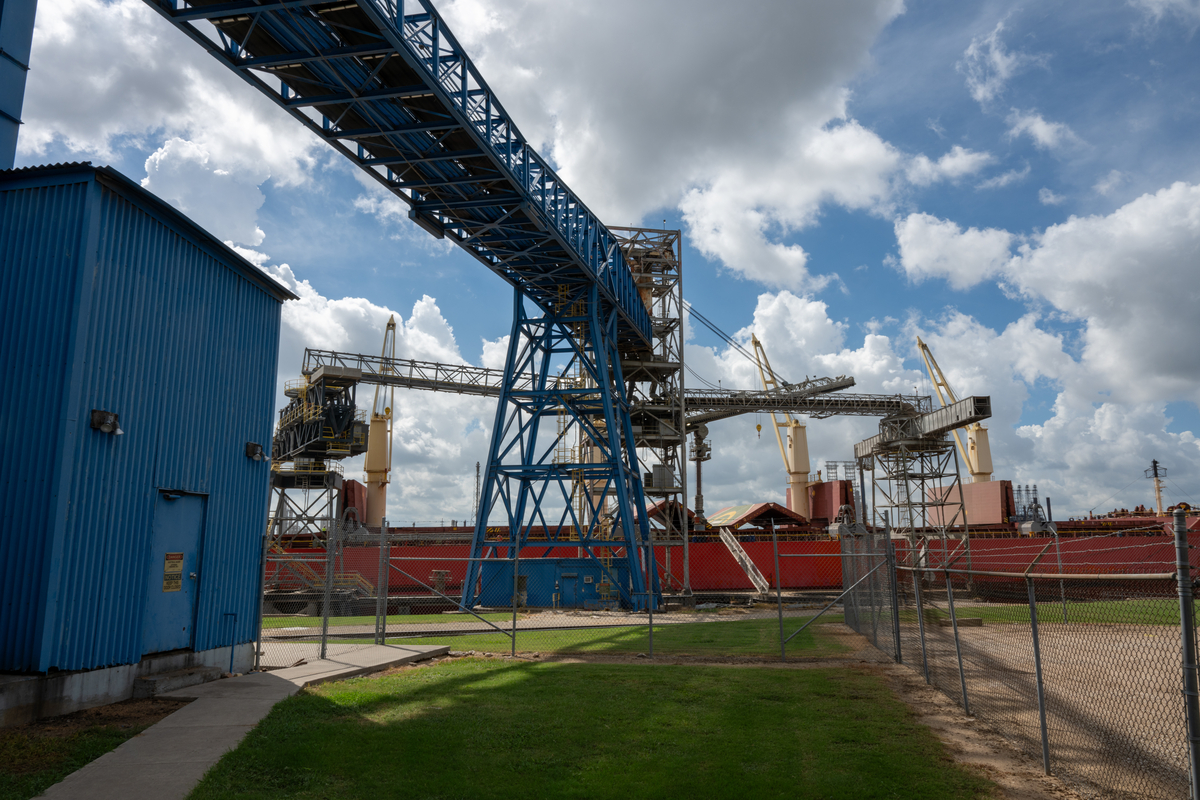U.S. Soy Celebrated During Virginia Trade Team Visit
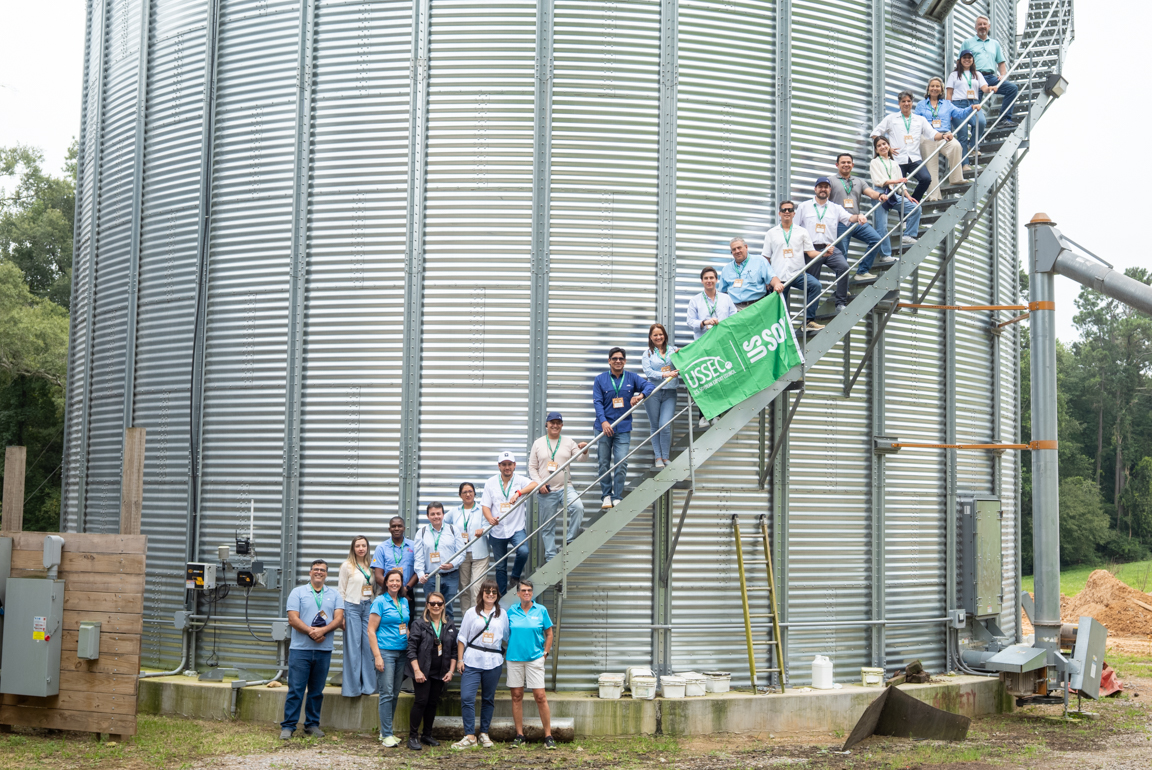
Photos of Susan Watkins at her farm near Petersburg, Virginia, on August 5, 2025. Watkins recently hosted a USSSEC trade team from Latin America to help increase trade of U.S. Soy.
A Central American trade team discovered more than sustainability practices and soybean fields during their visit to the rolling landscape of Virginia. They also found a deeper connection to the food they eat every day.
Susan Watkins, a generational farmer near Petersburg, Va., welcomed international farmers and soybean importers to her family farm last month, just ahead of the U.S. Soy Export Council’s 2025 Soy Connext meeting.
During the tour, visitors learned about Watkins’ farm operation, the rich history of the surrounding area and the high-quality soybean crop she is growing during the 2025 season.
“My son now is the eighth generation on the farm,” Watkins says. “We’re so very proud that the farm has continued in the Watkins name for that many years and will continue to grow to the next generation, with our grandchildren.”
The family knows a thing or two about sustainability. They can trace the roots of their farm back to the King of England, who signed the deed in the 1700s. Since that time, some of the crops have evolved, but the focus on sustainability has only grown stronger.
In her sixth year as a farmer-leader with the United Soybean Board, Watkins was proud to introduce her farm to the trade team.
“They love using U.S. Soy, and that’s something we take pride in,” she says. “USSEC and its partners are driving this international demand, and we are now present in more than 80 countries. I can see a steady increase coming.”
During the 2023/2024 marketing year, the U.S. exported 1,695 million bushels of soybeans worldwide. During that time, whole soybean export sales to Mexico totaled $ 2.486 billion, and soybean meal exports to Mexico, Colombia, Guatemala, the Dominican Republic, Venezuela, and Ecuador totaled $2.551 billion.
Andres Abascal, director of new projects for Comercializadora Abanor near Mexico City and a member of the trade team, was one of 25 customers and USSEC staff on the trip who toured the Watkins farm and a crush facility in Virginia. The logistics used to move beans, the crushing facility and seeing fields of soybeans were highlights for him.
“You can really follow along and see the whole process coming together,” he says while looking at soybean fields at the Watkins farm. “I think that’s very interesting, because sometimes you just take it for granted once we receive it in Mexico, in my case.”
Abascal says the company he works for has a preference for U.S. Soy. “We’ve been in the market for soybean meal and soybean oil for 15 years,” he says. “Right now we’re using 100% U.S. Soy.”
Gil Marcano, a farmer of pork, chicken and cattle from the Dominican Republic, was also on the trade mission. He valued the time he could spend speaking with Watkins and her son, Cody, during the visit.
“When I get here and see how you treat the land, the plants and the family to produce soy, that impressed me a lot,” he says. “Seeing what the generations are doing on the farm makes me feel very good.”
As the tour bus left the Watkins farm, Watkins says she couldn’t help but think that the time she spent visiting with the buyers and answering questions not only helped her farm but also the other 500,000 Soybean Checkoff farmers across the country.

